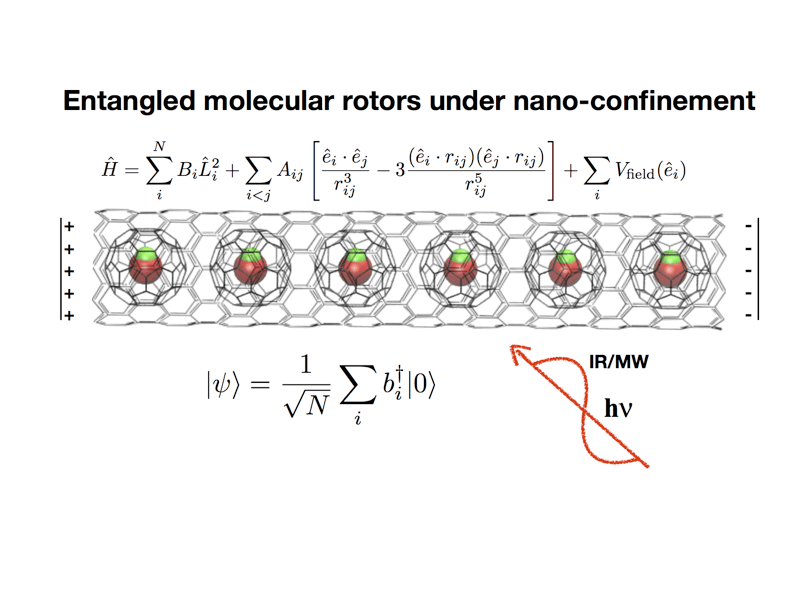Summary
The aim of the work is to develop theoretical tools to simulate and predict the behaviour of a one-dimensional chain of trapped dipolar molecules and to study the nature of entanglement as a design resource. In this device, individual water molecules are trapped inside C60 fullerene cages (also known as buckyballs), which in turn are inserted into a carbon nanotube. Such a peapod-like structure can be created using recent advances in organic synthesis. Remarkably, the quantum level structure of the guest molecule in the carbon nanotube peapod remains nearly identical to a free molecule, which makes this system a promising platform for implementing quantum information protocols, comparable to those explored with atoms and molecules trapped in optical lattices. Along the way, we are working to understand the response of the device to external electromagnetic fields, which could open the door to its use for precision electric field sensing with potential capabilities to detect fields from a single molecule.

Related Content

Quantum State Tomography with Machine Learning
Summary An important challenge in building a quantum computer is quantifying the level of control obtained in the preparation of a quantum state. The state of a quantum device is characterized from experimental measurements, using a procedure known as tomography. Exact tomography requires a vast amount of computer resources, making it prohibitive for quantum […]
June 6, 2018
Advanced microwave electronics enabling quantum technologies
Summary Superconducting quantum computers require quantum-limited measurements at microwave frequencies in order to implement error correction. Conventionally, this is accomplished using near quantum-limited Josephson Parametric Amplifiers (JPAs). The JPAs require bulky ferrite-based circulators that prevent on-chip integration of the amplifiers with the processor and take up the majority of space and cooling power in the […]
April 1, 2020

Zero-Dimensional Quantum Materials for the Next Generation of Highly-Selective Chemical Sensors
Summary Heavy metals are a major public health concern and their on-site detection in water supplies is not well served by existing lab techniques. We develop a new multi-modal platform comprising functionalized quantum dots of two-dimensional materials (2D-QDs) for the sensing of four highly-toxic heavy metal pollutants (arsenic, cadmium, lead and mercury). The zero-dimensional […]
March 11, 2019

Rydberg Atom Array Quantum Simulator
Summary Quantum simulators enable probing the static and dynamic properties of correlated quantum many-body systems that would otherwise be numerically inaccessible using classical simulators. We are developing quantum simulators based on arrays of neutral atoms excited to Rydberg states. Such Rydberg atom arrays are advantageous for simulating the dynamics of interacting spin systems (Ising spin […]
February 27, 2020

